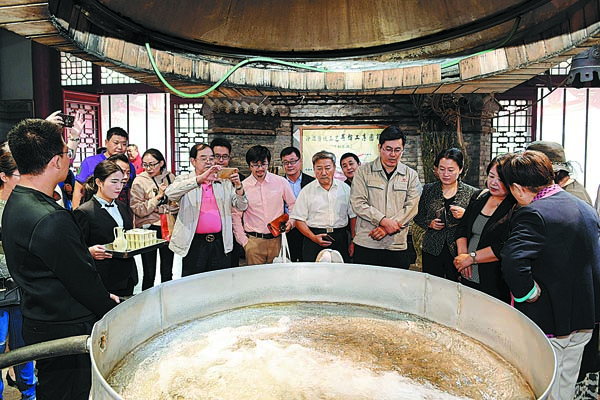

At the museum, visitors can sample beverages and see the process of liquor-making, from brewing to storage, filling and packaging. The cluster is part of local government efforts to integrate tourism with culture.
By 2020, the country had 62 national industrial culture heritage sites, named by the Ministry of Industry and Information Technology. Shanxi has six, including the Shigejie coal mine and Gaoping textile and dyeing plant.
"Industrial tourism started early in Shanxi," says Wang Aiqin, head of Shanxi Culture and Tourism Department, adding that its form has shifted from museums to creative and entrepreneurship parks.
The Coal Museum of China that opened in 1989 and the Pingshuo open-air coal mine that launched travel routes in the 1990s are models of industrial tourism development, she says, adding that industrial tourism development should take advantage of local existing conditions.
"With support from related government departments, industrial tourism development in resource-based regions has been on the fast track," she says.
But she calls for more attention to industrial heritage protection and utilization.
"At present, China's resource-based regions are in a critical period of transformation and development.
"Actively promoting the development of industrial and cultural tourism, according to local conditions, has strong practical significance for resolving excess capacity, improving industrial quality and efficiency, expanding the value of 'time-honored' brands, and transforming the development of many resource-based cities and old industrial bases," she adds.
Peng Ke'er contributed to the story.